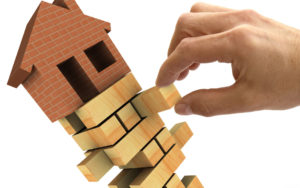 While a good many millionaires will agree that their fortunes were made in real estate, the honest ones will also tell you that they’ve probably lost a few fortunes in real estate along the way. This can be a risky business and every property purchased doesn’t always pan out to become a successful investment. There are many risks involved in real estate investing and you would be going to battle unprepared if you didn’t take a moment to carefully study a few common risks and work to avoid them when planning your property investment strategy.
While a good many millionaires will agree that their fortunes were made in real estate, the honest ones will also tell you that they’ve probably lost a few fortunes in real estate along the way. This can be a risky business and every property purchased doesn’t always pan out to become a successful investment. There are many risks involved in real estate investing and you would be going to battle unprepared if you didn’t take a moment to carefully study a few common risks and work to avoid them when planning your property investment strategy.
Unfortunately, there are very few “one size fits all” risks for real estate investing, as each type of investing is inherently different. This means that each type of real estate investment will involve a new set of risks. Below you will find a brief overview of a few different styles of investing and the common risks that are involved in each.
Rental Properties
This type of investing offers some risks that are unique and some that are also risks when investing in properties that are lease-to-own or rent-to-own as well. First and foremost is the risk of failing to make a profit. If the property in question cannot achieve an adequate monthly income to cover the expenses of operating the property then it is not a solid investment.
Other risks include the risk of getting bad tenants. This is particularly hard on first time investors. Bad tenants are costly and in some cases destructive (which leads to even greater expense). Vacancies are another risk for rental properties. These properties are costing money as they sit empty rather than earning money as they were intended. Limited turnovers are in your best interest as are long-term tenants.
“Flipped” Properties
This is a favorite property investment for many ‘hands on’ investors. This allows the investor to roll up his or her sleeves and take an active role in creating the masterpiece that will eventually bring in serious revenue (at least that is the hope). This is also one of the riskier investments, particularly when trying to turn a profit in what is known as a buyer’s market.
The risks are simple but often overlooked and they can have a significant impact on the overall success or failure of the project. First of all, the biggest risk is in paying too much for the property. Other risks include underestimating the costs of repairs, over estimating the ability of the investor to do the work him or herself, taking too much time to complete the repairs, experiencing a downturn in the housing market, making the wrong judgment call for the neighborhood, becoming overly ambitious, and getting greedy. Sometimes it is much better to walk away with a lesser profit than to end up loosing money by holding out.
Personal Residence
Keep in mind that your personal home is essentially an investment. The intention is that your home will gain in value over time and that equity in your home will build as you age. There are risks involved in this transaction as well. Buying a home that is in a ‘borderline’ area or one that is not showing obvious signs of growth is one of the biggest risks. This puts your home in the position to lose rather than gain value. This can make your home a burden rather than the investment it was intended to be. Other risks involved is becoming involved in a loan situation that is not at all beneficial (such as an adjustable rate mortgage with an unreasonable balloon payment).
Perhaps the biggest risk of all when purchasing a personal residence as an investment is failing to get a proper inspection that could rule out potentially costly and even dangerous problems within the home you purchase for you and your family. Toxic mold is one problem that comes easily to mind that most proper home inspections would almost immediately rule out. Others include structural problems that are costly to repair and dangerous to leave in disrepair. Each of these risks should be considered before an offer is made on any property.
For those seeking to turn impressive profits, real estate is one way in which this can be accomplished. It is in your best interest however to be aware of the risks that are involved and take careful steps to minimize those risks. Taking these steps now may cost a little more on the front end but in many cases the pay off for doing so will outweigh the expenses.
Bill Manassero is the founder/top dog at “The Old Dawg’s REI Network,” a blog, newsletter and podcast for seniors and retirees, that teaches the art of real estate investing. His personal real estate investing goal, which will be chronicled at olddawgsreinetwork.com, is to own/control 1,000 units/doors in the next 6 years. Prior to that, Bill and his family lived in Haiti for 11 years as missionaries serving orphaned, abandoned and at risk children.
